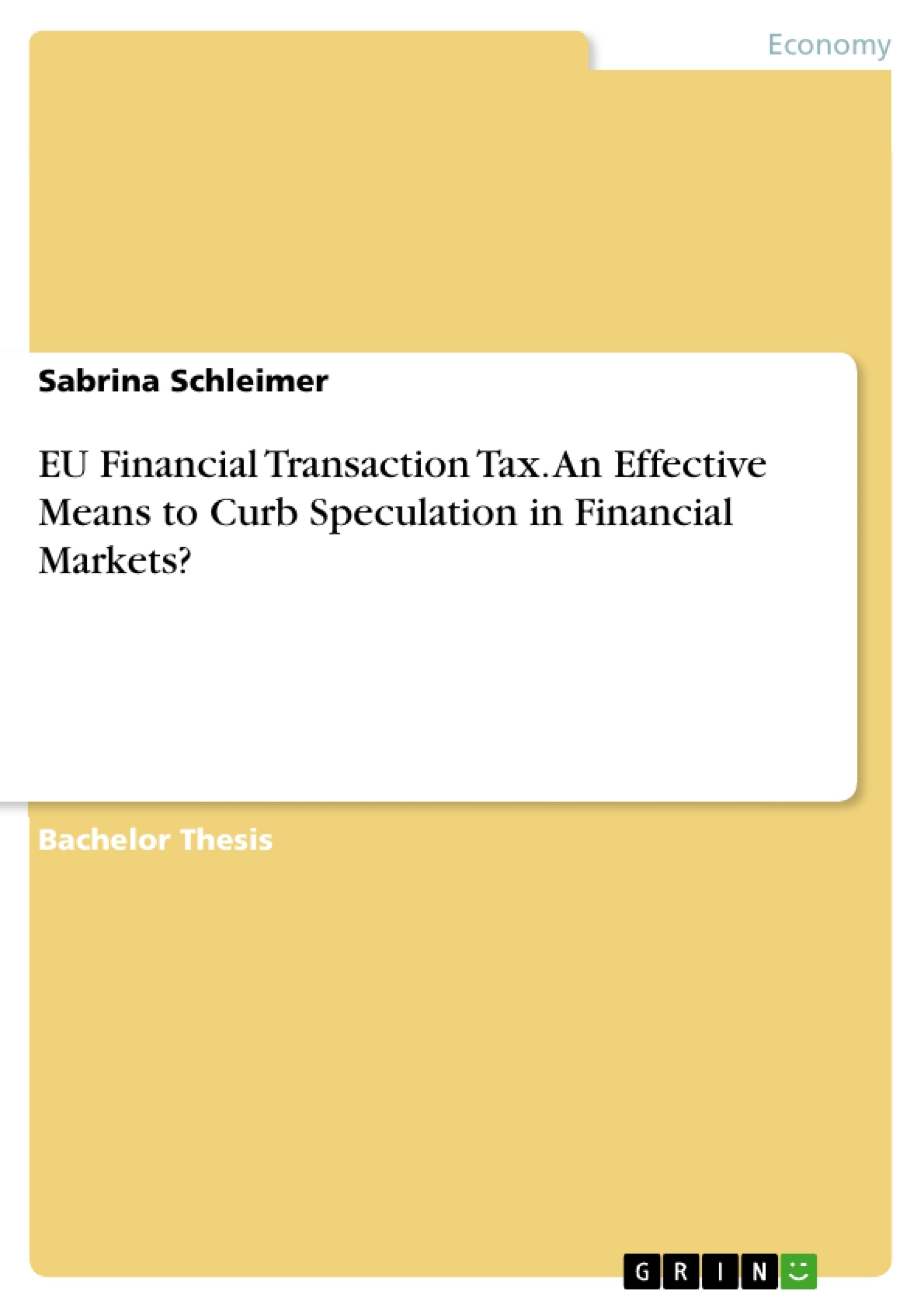The global financial crisis of 2007/08 revealed the necessity of improved stabilisation and regulation of the global as well as European financial markets. In this context, increased attention was given to financial transaction taxes and in 2011, the introduction of a European Union Financial Transaction Tax was first proposed. The objectives for this tax, set out by the European Commission, were tripartite: financial revenue generation, regulative strengthening and the improvement of the efficiency of financial markets.
The aim of this thesis is to examine whether the European Union Financial Transaction Tax would be an effective means to curb speculation in the European financial markets, and a suitable tax solution for the European Union. The thesis further analyses whether this tax could increase the financial markets efficiency, and contribute to a fair and substantial contribution of the financial sector to the participating countries’ public finances. In this regard, underlying theoretical concepts, potential positive effects of the transaction tax, as well as detriments and shortcomings are discussed.
Inhaltsverzeichnis (Table of Contents)
- Introduction
- Background
- Research questions
- Structure
- Speculation in the financial markets
- General definition
- Implications of speculation on the real economy
- Financial transaction taxes
- History and developments
- Stamp duty tax
- Keynes' financial transaction tax
- Tobin Tax
- Further developments until today
- Typology of FTTS
- Securities transaction tax
- Currency transaction tax
- Bank transaction tax
- Registration tax
- FTT objectives, effects and detriments
- EU Financial Transaction Tax
- Debate and developments
- Form and scope
- Objectives and effects
- Problems, detriments and criticism
- Practical FTT experiences
- Sweden
- France
- Italy
- Conclusion and outlook
- Results
- Outlook
Zielsetzung und Themenschwerpunkte (Objectives and Key Themes)
This thesis explores the effectiveness of the European Union Financial Transaction Tax (EU FTT) as a means to curb speculation in the European financial markets. It examines whether the EU FTT can be an effective tax solution for the European Union, contributing to financial market efficiency, fairness, and a substantial contribution from the financial sector to public finances.
- The effectiveness of the EU FTT in curbing speculation in financial markets.
- The suitability of the EU FTT as a tax solution for the European Union.
- The potential impact of the EU FTT on financial market efficiency.
- The contribution of the EU FTT to a fair and substantial contribution of the financial sector to public finances.
- The theoretical concepts, potential benefits, and drawbacks of financial transaction taxes.
Zusammenfassung der Kapitel (Chapter Summaries)
- Introduction: This chapter provides the context for the research, outlining the global financial crisis of 2007/08 and the subsequent focus on financial transaction taxes. It introduces the research questions and the structure of the thesis.
- Speculation in the financial markets: This chapter defines speculation in financial markets and examines its potential implications for the real economy.
- Financial transaction taxes: This chapter explores the history and development of financial transaction taxes, including the stamp duty tax, Keynes' financial transaction tax, the Tobin Tax, and further developments until today. It also provides a typology of financial transaction taxes, discussing different categories such as securities transaction tax, currency transaction tax, bank transaction tax, and registration tax. Finally, the chapter examines the objectives, effects, and detriments of financial transaction taxes.
- EU Financial Transaction Tax: This chapter discusses the debate and developments surrounding the EU FTT. It explores the form and scope of the proposed tax, examining its objectives and potential effects. The chapter also addresses problems, detriments, and criticism of the EU FTT.
- Practical FTT experiences: This chapter examines the practical experiences of financial transaction taxes in Sweden, France, and Italy.
Schlüsselwörter (Keywords)
Key concepts and terms explored in this thesis include financial transaction tax, speculation, financial market regulation, European Union, Tobin Tax, financial market efficiency, public finances, and the global financial crisis.
- Quote paper
- Sabrina Schleimer (Author), 2017, EU Financial Transaction Tax. An Effective Means to Curb Speculation in Financial Markets?, Munich, GRIN Verlag, https://www.grin.com/document/381034



